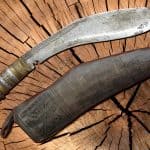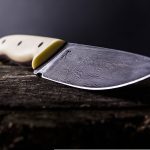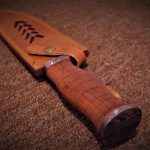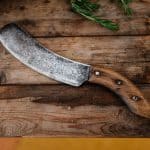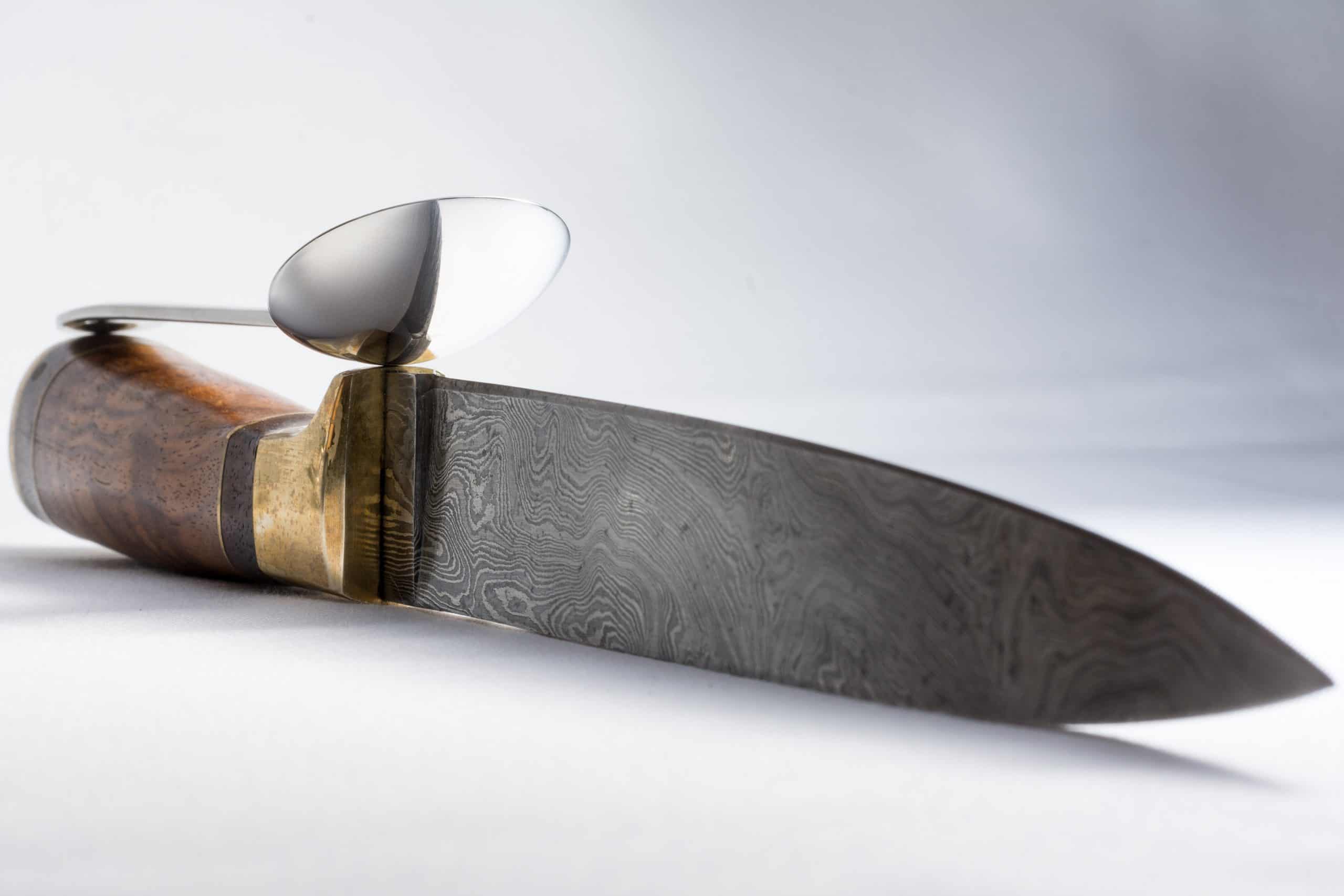
Introduction
Using a bench grinder to sharpen knives is a great way to get the perfect edge on your blades. It’s easy, economical and efficient. A bench grinder is an ideal tool for sharpening knives quickly and effectively, as it allows you to use both sides of the grinding wheel in order to get an even, smooth finish on any type of knife. With the help of a bench grinder, you will be able to restore dull or damaged blades back to their original factory-sharp condition. As well as giving your knives an excellent sharpening, using a bench grinder can also help to improve the overall aesthetic of your knives. By using a bench grinder, you will be able to make sure that your knife has no nicks or other imperfections which can hamper its performance or just ruin its look altogether.
In this article we will discuss how to use a bench grinder safely and effectively for sharpening knives. We’ll look at the different types of grinders available and talk about the different processes involved in achieving that perfect edge on your blade. We’ll also provide some tips on how best to maintain your blades after they have been sharpened with a bench grinder and what other tasks you can use the device for in order to benefit fully from it.
Types of Bench Grinders for Sharpening Knives
If you are looking to sharpen knives, it is important to understand the different types of bench grinders available. The most common type of grinder is an electric bench grinder that utilizes a grinding wheel and is used primarily for sharpening. To sharpen knives with a bench grinder, the knife should be placed on the right side of the wheel and moved by hand in a clockwise direction as the wheel spins until achieving desired sharpness. It’s important when using this type of grinder to make sure not to overheat the blade so as to avoid damaging it.
A more versatile type of bench grinder can be used for both honing and rapid material removal. Honing wheel grinders typically utilize stones or abrasive pads and allow for aggressive sharpening compared to traditional wheel grinders. These tools provide consistent honing without burning or damaging the blade for a long lasting sharp edge.
The last type of bench grinder is known as a wet wheel grinder and uses diamond abrasives, which act like tiny very hard teeth, suitable for all kinds of knives from kitchen to outdoor, sports utility or chef’s tools without leaving any burned marks on the blade edge. This type of tool also helps reduce heat generated during grinding as water cooled surfaces act as a barrier against friction produced by rotating wheels.
Knowing which bench grinder best fits your needs allows you to better utilize their unique capabilities and benefit from their specific intended use cases. Understanding how each one works will ensure when you take on that project, your results are exactly what you wanted them to be!
Prepping Your Grinder for Sharpening
1. Select the right grinding wheel – It is important to use a wheel that is designed for sharpening knives. A specialized wheel made of aluminum oxide or diamond stones will provide the best results. Keep in mind that lighter wheels work better on softer metals such as stainless steel, while heavier wheels are better for hard materials like high-carbon knives
2. Set the grinding wheel – You’ll want to make sure you set your grinding wheel at an angle of about 30 degrees from the blade of the knife. This angle is optimal for ensuring that you’re creating a sharpened edge without doing any unnecessary damage to the blade
3. Place your knife against the grinding wheel – With your hands steady and firmly pressed against both sides of the grinding wheel, slowly place your knife at an angle so that it meets with the edge of the wheel. Only move it in one single direction and keep track on how well sharpened it becomes
4. Move your knife back and forth – Gradually begin moving your knife backward and forward against the spinning wheel while keeping it steady and in line with its original position so as not to do any more damage than you have to
5. Stop when edges have been achieved – As soon as you have reached a desired level of sharpness, stop applying pressure and be sure to remove all metal burrs before finishing up and wiping down your blade
6. Check if necessary – If needed, you can repeat this process from step three until you are completely satisfied with how sharpened your blade of choice is
Learning to Identify and Maintain the Angle
Knowing how to identify the ideal angle for your knife is an important part of learning to use a bench grinder for sharpening knives. It’s key that you understand what type of bevel (angle) is best for your particular blade, since each blade will have its own optimum angle range. If you use too wide of an angle, it’ll make the blade too thick and it won’t cut through efficiently; using too narrow an angle results in a blade that isn’t sturdy or durable.
Once you’ve identified the best angle range for your knife, the next step is to maintain that specific angle while sharpening. The most effective way to ensure accuracy and consistency is to use a jig. With this tool attached to the grinder’s table, you can place the knife at an exact right or left angle against the grinding wheel- enabling faster and more efficient sharpening. Whenever you move the knife against the wheel, raise it slightly to make sure that the exact point of contact between both remains unchanged at all times. While angling and making sure that your chosen angle stays uniform as you sharpen, keep your movements timely and coordinated between both hands for better control. Once you’ve inspected and realized that your blade is suitably sharpened – proceed carefully with testing out its cutting capability and check on other potential damages from improper sharpening!
Safety Tips
Before you start using your bench grinder to sharpen your knives, it’s important to keep yourself safe by following a few safety tips. The first step to take is to make sure the area in which you are working is fully enclosed and that you’re wearing appropriate eye and ear protection. Next, make sure the bench grinder is sturdily secured to a bench or table and won’t move while it’s in use. After ensuring the grinder is stable, switch it on and wait for the device to reach full speed before beginning work with your knives. Finally, be aware of sparks or friction created when grinding as they can cause bodily harm if contact is made. As you work, keep a fire extinguisher nearby in case of an emergency. All these precautions will help ensure that sharpening knives with a bench grinder can be done safely and effectively.
Sharpening Your Knife
Step 1: Secure the knife in the bench grinder vise. Some grinders have a special guard or jig specifically designed for sharpening knives, so if yours does, you should use it for the best and safest results.
Step 2: Set the bench grinder to an angle of 30 degrees by adjusting its bevel. A good way to check this is by inserting a flat piece of metal such as a butter knife between the two grinding wheels and make sure both sides of the blade are at a 30 degree angle from each other.
Step 3: Begin sharpening your knife against one side of the wheel, using constant strokes for about five seconds each. Make sure that your strokes are perpendicular to the outside edge of the grinding wheel to ensure uniformity and efficiency. Make sure to avoid any sparks when grinding near your hand or clothing – safety first!
Step 4: When finished with one side, turn your blade over and repeat Step 3 on the other side with five second strokes onto this new angle. It is important to follow Steps 3 and 4 twice on both sides in order to achieve complete sharpening results with an even degree of angle distribution along both edges of your knife’s blade.
Step 5: Finally, finish up by proper cleaning and polishing of your newly sharpened blade. You can do this either by hand with a speck-free cloth or by lightly running it through a serrated stone, after you’ve washed it off any remaining debris from sharpening residue. The goal is to remove any more burrs or jagged edges along either angle that could potentially drag food debris when slicing or cutting in future usage; ensuring that no areas will remain untouched during sharpen preparation benefits for optimal results every use!
Finishing Touches
Creating a nice edge for your knife with a bench grinder involves more than just running the blade along the wheel. To create a more polished and finely finished product, there are a few carefully executed steps that must be taken.
First, it is important to dress the wheel of the bench grinder. This step creates a finer and sharper edge and removes any build-up from past uses. This will also help ensure that you get an even finish on your knife blade. Make sure to keep safety in mind while doing this and don’t forget to wear protective eyewear.
Next, choose the correct abrasive wheel for your grinding job by using an appropriate grit level that suits your needs. For instance, if you want to do more delicate work, such as polishing stainless steel blades or creating special shapes with top-quality finishes then use higher grit wheels like 80-grit or higher ones from 120 up to 280 grits. If you want coarser results on coarse materials such as metals used for tools, then lower grit wheels like 36-grit or lower would apply. Make sure to find out what suitable abrasive wheels are available depending on what type of material you need to work with before starting your grinding action.
Finally, angle your knife blade at 15 – 20 degrees (to either side) against the grinding wheel and sharpen lightly keeping the angle constant during each stroke across the wheel so that an even finish is achieved throughout the entire surface area of your knife blade. Move slowly when sharpening because it helps create a finer edge faster but take caution not to stay in one spot too long otherwise you may end up with grooves along your blade which dulls its performance over time! Additionally, try out different techniques such as reverse strokes or rotating both direction until you create an eye-pleasing edge for all sharp edges along your knife handle for added aesthetic value!
Conclusion
Using a bench grinder to sharpen knives is a great way to quickly and easily sharpen dull knives, giving them a longer lifespan without having to buy new ones. Before using the bench grinder, it’s important to make sure that you have all of the necessary safety gear and equipment. Once your protective gear is in place and your work area is ready, start by ensuring the grinding wheel is secure in the bench grinder stand. Then, align the knife against the stone and move it away from yourself while pushing onto the blade with one hand while cradling with another; make sure not to apply too much pressure as this can damage or over-sharpen the blade. Repeat this on both sides of your knife until it reaches your desired sharpness level.
Maintaining sharp knives with a bench grinder is simple but requires consistent use. To maintain knives over time, use a light pressure on the stone while adjusting angles slightly each time you sharpen them. Doing so will make sure that blades do not become rounded over time from repeated strokes at one angle. Additionally, make sure you’re always using a coolant in between sharpening sessions as this reduces heat build-up that can blur blades when heated too quickly during grinding. Following these guidelines for maintaining will keep your knives well maintained for years of use.







